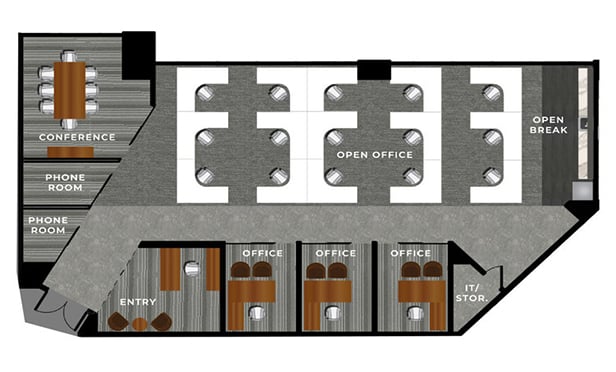
HOUSTON—In 2001, when Tropical Storm Allison hit, rents rose 6.1% that year. In 2005, with the exodus from New Orleans due to Hurricane Katrina as well as Hurricane Rita locally, rents rose 5.9%. In 2008, Hurricane Ike sent rent levels up by 5.7%.
After Harvey, multifamily rents that were clocking in at -0.2% during the last 12 months will likely spike just from the mere cessation of any specials. The overall average effective rent per month rose by $15 to $999 from $984 pre-Harvey. It is too soon to tell how long the rent spikes will remain given that the repair period may range anywhere from three to 12 months, Bruce McClenny, president of ApartmentData.com, tells GlobeSt.com.
Obviously, Houston's glut of residential properties has been totally erased by Harvey. The overall occupancy rate has dropped slightly, to 88.8% from 89.1% pre-Harvey. This rate is based on keeping the damaged units in supply, with 71,000 units available to rent. If the damaged units are not included in the supply, then the occupancy rate is 90.1% and 63,478 units are available to rent. Since Harvey, 6,063 units have been leased. Prior to Harvey, the inventory of 2,725 properties represented 638,603 units and 70,000 units were available to rent so the unit count is dropping.
Single-family homeowners that have been forced out of homes need to be relocated while homes are being remodeled and repaired, which will be another source of demand that will more than likely help the high-end apartments inside the 610 Loop. Many insurance companies will send platoons of adjusters and additional contractors will be needed to repair all the damage. Both of these groups will need places to stay.
Some apartment properties affected by the flooding may have minor flooding on just the ground floor and could be operational more quickly than other properties. There are some that were under water for an extended period of time that may be completely demolished.
In addition, the damage assessments are still being compiled but thus far, damage estimates are lower than anticipated. ApartmentData.com surveyed 81.2% or 2,212 of the properties, finding 181 properties with damage and 10,571 units having damage as of September 15.
“As we continue to learn how apartment properties were affected by Harvey, I am surprised by the relatively low number of units damaged,” says McClenny. “The most realistic comparison we can make is to Tropical Storm Allison, when we lost 5% of the supply, which was 20,000 units. Harvey was a much larger storm that created flooding across the entire region and we are only seeing a small percentage of the supply affected so far. We still have to assess more properties so that percentage is likely to increase.”
ApartmentData.com is working with the multifamily industry (property managers, supervisors, owners/developers) to get an accurate assessment of the 2,725 apartment communities (representing 638,603 units). Apartment Data.com covers Houston, north to Conroe, south to Galveston, over to Bay City, west to Katy, east to Baytown, northeast/northeast/northwest and the communities of Sugar Land, Richmond, Rosenberg and Kingwood.
“We have 500 properties still to assess,” McClenny tells GlobeSt.com. “And, the damage is random and not in a logical pattern. There was a patchwork landing kind of flooding going on, where you had damaged and dry properties not too far away from each other.”
Want to continue reading?
Become a Free ALM Digital Reader.
Once you are an ALM Digital Member, you’ll receive:
- Breaking commercial real estate news and analysis, on-site and via our newsletters and custom alerts
- Educational webcasts, white papers, and ebooks from industry thought leaders
- Critical coverage of the property casualty insurance and financial advisory markets on our other ALM sites, PropertyCasualty360 and ThinkAdvisor
Already have an account? Sign In Now
*May exclude premium content© 2025 ALM Global, LLC, All Rights Reserved. Request academic re-use from www.copyright.com. All other uses, submit a request to [email protected]. For more information visit Asset & Logo Licensing.








